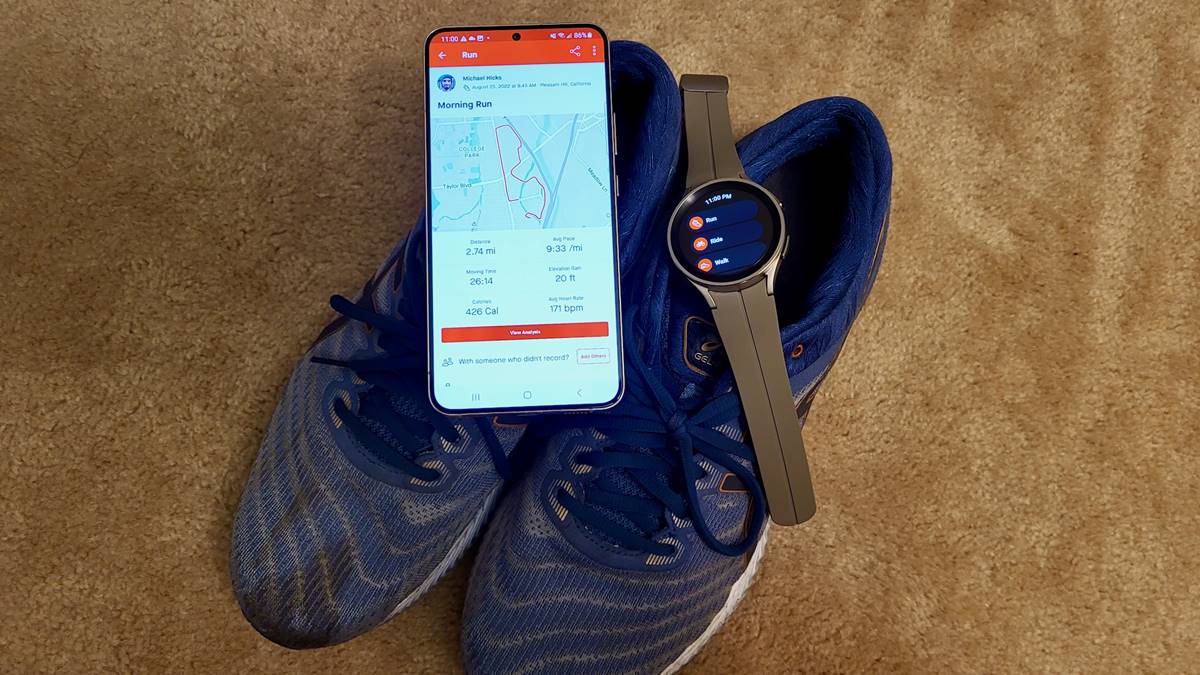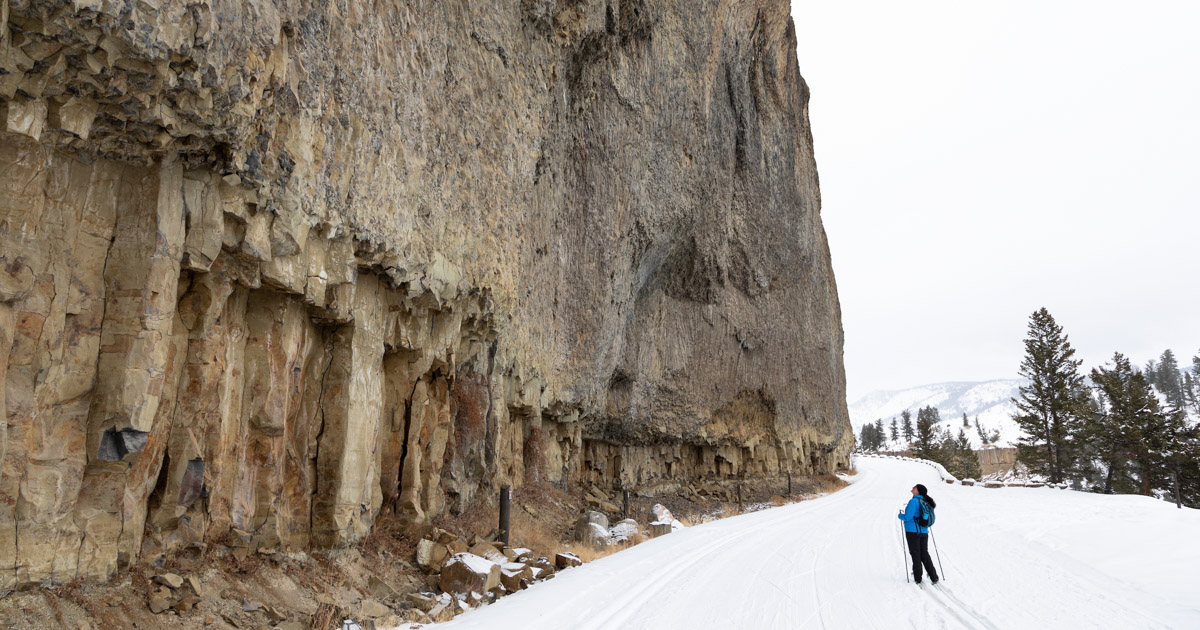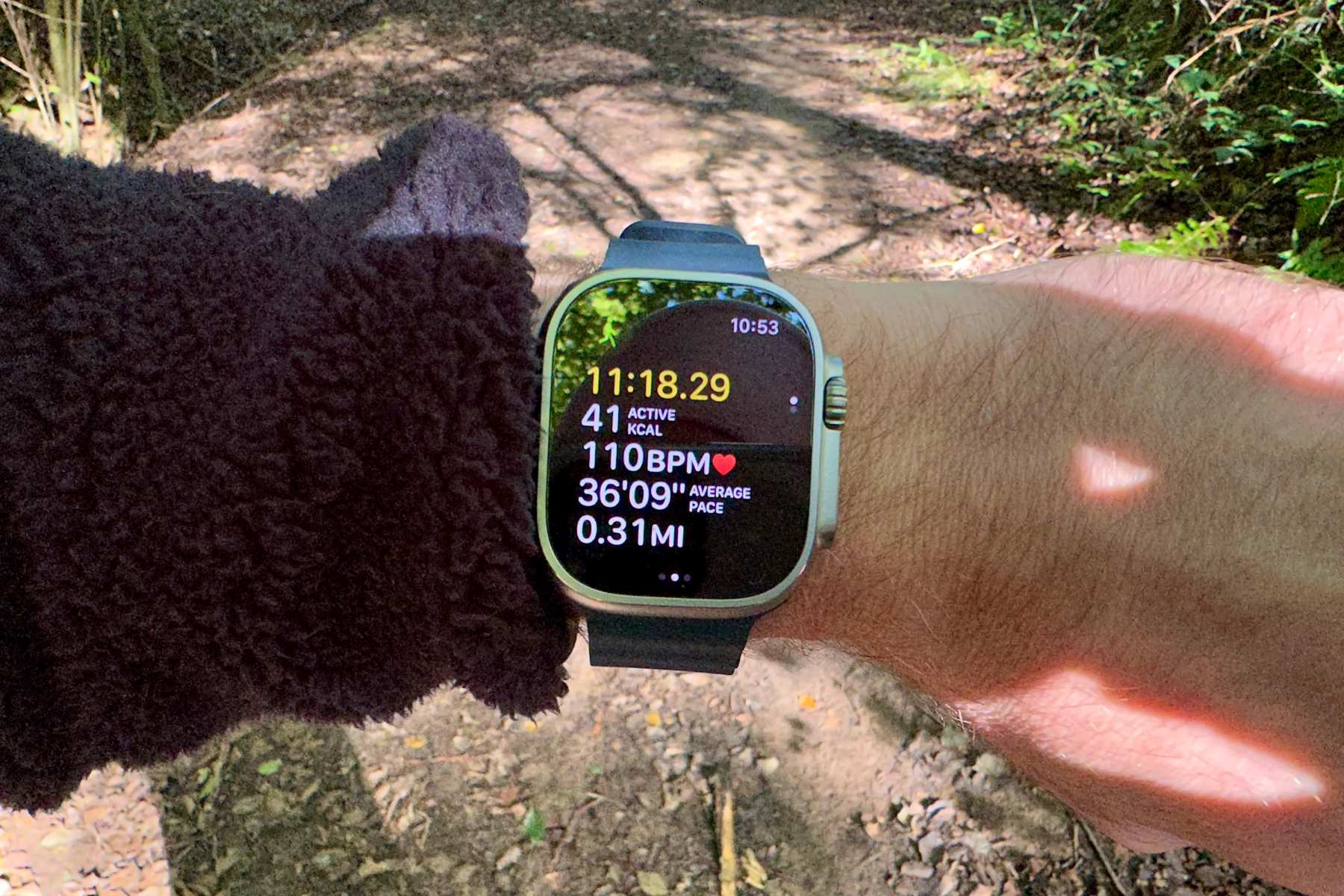

Brands
How To Show Pace On Strava Feed
Modified: January 2, 2024
Learn how to display your pace on your Strava feed with these simple steps. Discover the top brands that offer pace tracking features for an enhanced running experience.
Introduction
Welcome to the world of Strava, where athletes from around the globe come together to share and celebrate their fitness achievements. If you’re an avid runner, cyclist, or any other type of endurance athlete, chances are you’re familiar with Strava. It’s a popular social network and performance tracking platform that allows individuals to record and share their activities, connect with fellow athletes, and gain inspiration from their accomplishments.
When it comes to using Strava, athletes have the ability to track various metrics, such as distance, time, and elevation. While these metrics provide valuable insights into an athlete’s performance, one important metric that is often missing from Strava activity feeds is pace. Pace is a crucial component of any endurance activity as it indicates the speed at which an athlete is moving.
So, why is it important to show pace on your Strava feed? The answer lies in the motivation and inspiration it can provide to both yourself and others. Sharing your pace can help you gauge your progress, set new goals, and establish a sense of accountability. It also allows you to showcase your impressive speed and athleticism to the Strava community, potentially inspiring others to push their own limits.
In this article, we will explore three different methods you can use to show pace on your Strava feed. Whether you prefer a hands-on approach, utilizing tags and hashtags, or integrating with third-party apps, we’ve got you covered. So, let’s dive in and discover how you can add that extra flair of pace to your Strava activities.
What is Strava?
Strava is a popular social network and performance tracking platform designed specifically for endurance athletes. Whether you’re a runner, cyclist, swimmer, or even a hiker, Strava offers a range of features to help you track, analyze, and share your activities with the global community of athletes.
The platform allows users to record their activities using GPS devices, such as smartphones, smartwatches, or cycling computers. Once an activity is recorded, Strava provides detailed insights into metrics like distance, time, elevation, and heart rate. These metrics allow athletes to monitor their progress, set personal goals, and compare their performance with others.
One of the standout features of Strava is its social component that enables athletes to connect and engage with fellow athletes. Users can follow other athletes to stay up-to-date with their activities, leave comments and kudos on their posts, and join virtual challenges and clubs to foster a sense of community and friendly competition.
Moreover, Strava offers a segment feature that divides popular routes or stretches of road or trail into sections. Athletes can compete for the fastest time on these segments and earn bragging rights for their achievements. This adds an element of competition and motivation to the Strava experience.
Strava has also introduced features like Strava Beacon and Safety Zones, which provide enhanced safety measures for athletes during their activities. Strava Beacon allows users to share their location in real-time with selected contacts, providing peace of mind to both athletes and their loved ones.
Additionally, Strava allows athletes to join clubs and participate in virtual challenges, further encouraging engagement and friendly competition within the Strava community. The platform is available on both web and mobile devices, making it easily accessible to athletes around the world.
Overall, Strava offers a comprehensive platform for athletes to track, analyze, and share their activities, as well as connect with a global community of like-minded individuals who share a passion for endurance sports.
Why show pace on Strava feed?
When you share your activities on Strava, showcasing your pace can provide valuable insights and motivation for yourself and others in the Strava community. Here are a few reasons why showing your pace on your Strava feed is beneficial:
1. Track your progress: By displaying your pace on Strava, you can easily compare your current activity with previous ones. Tracking your pace over time allows you to monitor your progress and see how your speed and performance improve over days, weeks, or months.
2. Set new goals: Sharing your pace on Strava can help you set new goals and targets for your future activities. By seeing how fast you’ve been running or cycling, you can challenge yourself to improve and set new personal records. It adds an element of competition with yourself and motivates you to push your limits.
3. Inspire others: Displaying your pace on Strava can inspire and motivate other athletes in the Strava community. When people see your impressive speed and performance, they may be inspired to push themselves and strive for similar achievements. Sharing your pace can contribute to a positive and competitive environment where athletes can encourage and motivate one another.
4. Accountability: Showing your pace on Strava holds you accountable for your performance. When you share your activities and pace with others, there is a sense of commitment to maintaining a certain level of performance. It adds a layer of motivation to consistently push yourself and maintain a strong pace.
5. Foster a sense of community: Strava is a community-centric platform, and sharing your pace contributes to that sense of belonging. By sharing your accomplishments, challenges, and progress, you become part of a supportive community that celebrates the achievements of its members. Sharing and discussing pace can spark conversations and connections among athletes with similar goals and interests.
By showing your pace on your Strava feed, you not only track your progress and motivate yourself but also inspire and engage with the broader Strava community. It adds a competitive yet supportive element to the platform, encouraging athletes to strive for their best and connect with like-minded individuals.
Method 1: Manually calculating and including pace in activity description
If you prefer a hands-on approach, you can manually calculate your pace and include it in the description of your activity on Strava. Here’s how:
- Calculate your pace: To determine your pace, divide the total time of your activity by the distance covered. For example, if you ran for 30 minutes and covered 5 kilometers, your pace would be 30 minutes divided by 5 kilometers, which equals 6 minutes per kilometer.
- Include pace in the activity description: After calculating your pace, you can add it to the activity description when uploading your activity to Strava. Mention your pace along with other details like distance and time. For example, you can write “Completed a 10-kilometer run in 50 minutes with an average pace of 5 minutes per kilometer.”
- Provide additional context: To add more context to your pace, you can mention the terrain, weather conditions, or any challenges you faced during your activity. This gives other athletes a better understanding of your pace and the effort you put in.
- Update your historical activities: It’s not just about new activities – you can also go back and update the descriptions of your past activities to include your pace. This allows you to have a comprehensive history of your pace on Strava.
This method gives you complete control over how you present and highlight your pace on Strava. It allows you to showcase your achievements and progress while providing valuable information to yourself and others in the Strava community. However, it does require extra effort on your part to manually calculate and update the pace in your activity descriptions.
Keep in mind that Strava provides an automatic pace calculation based on the time and distance recorded. However, the manually calculated pace in the activity description adds a personal touch and may provide more accurate and specific information.
Method 2: Using specific tags or hashtags to indicate pace
If you’re looking for a simpler way to indicate your pace on Strava, you can utilize specific tags or hashtags in the activity description. Here’s how:
- Choose a pace indicator: Select a symbol or keyword that represents your pace. It could be a running shoe emoji, the word “fast,” or any other indicator that resonates with you.
- Add the pace indicator to your activity description: When uploading your activity to Strava, include the chosen pace indicator along with other information in the description. For example, you can write “Completed a 10-kilometer run with a #fast pace” or “Cycled 50 kilometers with a ⚡️ pace.”
- Be consistent: To ensure clarity and uniformity, use the same indicator consistently across your activities. This makes it easier for others to recognize and understand your pace.
- Explore existing pace tags or hashtags: Strava has a vibrant community, and athletes often create their own tags or hashtags to indicate their pace. Spend some time exploring popular tags or hashtags related to pace and consider adopting them in your activity description.
- Utilize segment tags: In addition to using pace indicators in the activity description, you can also use segment tags. If you’ve completed a segment with an impressive pace, add a specific segment tag to highlight your achievement. This allows other athletes to see your pace in the context of specific segments.
Using tags or hashtags to indicate pace on Strava is a straightforward and convenient method. It allows you to quickly convey your pace while browsing through your activities and engages with the wider Strava community. Moreover, utilizing existing pace tags or hashtags helps to create a common language and connection with other athletes.
Remember to choose indicators or tags that accurately represent your pace and resonate with you personally. This method provides a visually appealing and easily recognizable way to showcase your pace on Strava without the need for manual calculations or updates.
Method 3: Using third-party apps or integrations to display pace
If you’re looking for a more automated and precise way to display your pace on Strava, you can leverage third-party apps or integrations that offer specialized features for pace tracking. Here’s how you can use them:
- Explore Strava-compatible apps: Strava supports integration with various third-party apps and devices. Look for apps or devices that offer advanced pace tracking capabilities. For example, apps like Garmin Connect, Fitbit, or Runkeeper allow you to sync your activities with Strava and display precise pace information.
- Ensure seamless integration: Once you’ve chosen a compatible app, follow the instructions to connect it to your Strava account. This usually involves granting access permissions for data sync between the app and Strava.
- Record activities using the third-party app: Instead of manually recording activities within the Strava app, use the third-party app or device to track your activities. This ensures that your pace data is accurately captured and automatically synced with Strava.
- Review and customize pace data: After your activity is synced with Strava, review and customize the pace data as needed. This may involve adding additional details, adjusting any discrepancies, or highlighting specific pace achievements.
- Take advantage of additional features: Third-party apps often offer additional features for pace tracking, such as pace zones, interval training, or performance analysis. Explore these features to further enhance your pace tracking and training experience.
Using third-party apps or integrations offers a more streamlined and accurate way to display your pace on Strava. These apps not only provide precise pace data but often come with additional features that can benefit your training and performance analysis.
Keep in mind that while these third-party apps offer enhanced pace tracking capabilities, they may require a separate subscription or additional setup. However, the benefits of accurate and automated pace tracking are worth considering, particularly if pace is a crucial metric in your training or if you want to share detailed insights with the Strava community.
Tips for accurately representing pace on Strava feed
When it comes to representing your pace on your Strava feed, accuracy and clarity are key. Here are some tips to help you accurately represent your pace on Strava:
- Use the correct units: Ensure that you’re using the appropriate units for pace, whether it’s minutes per kilometer (min/km) or minutes per mile (min/mi). Using the correct units makes it easier for others to understand and compare your pace.
- Avoid rounding errors: When calculating your pace manually, be mindful of rounding errors. Round your pace to a reasonable decimal point to maintain accuracy, but avoid excessive rounding that may misrepresent your actual pace.
- Consider the type of activity: Different activities may have different expectations for pace. For example, a fast pace for a marathon may be slower compared to a fast pace for a 5K. Take the distance and nature of the activity into account when representing your pace.
- Include relevant information: Add context to your pace by including relevant information such as the type of terrain, weather conditions, or any notable challenges you encountered during your activity. This helps others understand the factors that may have influenced your pace.
- Highlight personal records: If you achieve a personal record (PR) for a particular distance or segment, make sure to mention it in the activity description. This allows others to recognize your achievements and appreciate the effort you’ve put into your training.
- Be consistent with pace indicators: If you’re using pace indicators or hashtags, use them consistently across your activities. This makes it easier for others to follow your progress and understand your pace trends.
- Update activities promptly: If you notice any discrepancies or inaccuracies in your recorded pace, make sure to correct them as soon as possible. Promptly updating your activities ensures that your Strava feed accurately reflects your performance and efforts.
- Be aware of privacy settings: Check your privacy settings to ensure that your pace information is being shared with the appropriate audience. You can choose to make your activities public, visible to followers only, or keep them fully private depending on your preferences.
- Engage with the Strava community: Strava is a social platform, so don’t hesitate to engage with other athletes. Comment on their activities, give kudos, and provide encouragement. Engaging in discussions about pace and training can enhance your own understanding and appreciation of different approaches to pace representation.
By following these tips, you can accurately represent your pace on Strava and share your achievements and progress with confidence. Remember that pace is a dynamic metric, so don’t be afraid to adjust and refine your representation as your fitness and performance levels evolve over time.
Conclusion
Showing your pace on your Strava feed can add an extra layer of insight, motivation, and engagement to your activities. Whether you choose to manually calculate and include pace in the description, use specific tags or hashtags, or leverage third-party apps for accurate tracking, representing your pace allows you to track progress, set goals, inspire others, and foster a sense of accountability within the Strava community.
By manually calculating and including pace in the activity description, you have control over how you present your pace and can provide additional context for your performance. Using specific tags or hashtags adds a visual element and allows for easier discovery and comparison of your pace. Utilizing third-party apps or integrations provides automation and precise pace tracking, along with additional features to enhance your training experience.
When representing your pace, remember to be accurate, consistent, and clear. Use the correct units, avoid rounding errors, and consider the type of activity. Including relevant information and highlighting personal records further enriches your pace representation. Engaging with the Strava community and adjusting privacy settings help create a vibrant and supportive environment for sharing pace achievements.
As you showcase your pace on Strava, remember that it’s not just about the numbers, but the journey, progress, and connections you make along the way. Strava is more than just a tracking platform; it’s a community of athletes who inspire, motivate, and celebrate each other’s successes. So, embrace the opportunity to display your pace, stay active, and enjoy the rewards of being part of the Strava community.




